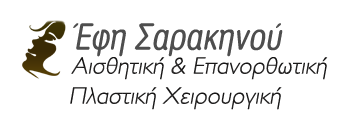Statistics inform us that 75% of all burns are caused by the victim himself, while 65-75% of these injuries occur at home.
Groups at high risk for suffering burns are children under 3 years of age and the elderly over 65 years of age. Immediately after, with a percentage of 20%, random people present at the place where the fire occurs follow.
More than 1 million burns occur each year in the United States, of which 100,000 require admission to a specialized burn center. Every year 12-15 thousand people die from complications of burns.
In Greece, burns are the 4th cause of death in children aged 0-14. The skin is the largest organ of the body and has a decisive role in regulating body temperature and fluids and is also the body’s shield against the entry of microbes.
The burn which can be either thermal, chemical or electrical destroys different layers of the skin. So its severity depends on the extent (% of body surface burned) and depth.
Burns are categorized according to their depth into:
1st degree, when only the skin is damaged. Here the color of the skin is red, with intense pain to the touch. This is usually where sunburn belongs.
2nd degree, partial thickness, when the epidermis and the upper part of the dermis have been damaged. In this case the color of the skin is red, turns white on pressure and shows large blisters with serous fluid. Intense pain is characteristic.
3rd degree, full thickness, when the entire thickness of the skin has been destroyed, up to the subcutaneous fat or even deeper. Characteristic points are the absence of pain in the area of the burn, the absence of bubbles, while the color is white or gray or black or even red, which does not whiten under pressure.
Special cases are radiation burns (after radiation therapy) and respiratory burns that occur due to inhalation in fires in a closed space. The good or bad prognosis of a burn depends on the degree of the burn and the extent of the burned surface. The larger the burn surface and the depth of the burn, the worse the prognosis.
Regarding the treatment of the burn, depending on its severity and extent, it may require treatment in a special burn intensive care unit or be treated as an outpatient.
Most minor 1st degree burns heal on their own with treatment of the area with special creams and protection from injury and infection. Limited partial thickness burns are treated in the same way. Deep partial-thickness and full-thickness burns, depending on the size of the burned surface, may need immediate or remote treatment in order to heal the skin satisfactorily with the best possible result. In any case, a burn is a very serious injury to the body and needs immediate assessment by a plastic surgeon. Burns that occupy a large part of the body’s surface need special treatment immediately to replenish the fluids lost from the burned surface and, correspondingly, immediate surgical restoration.
Burns that do not have the ability to heal on their own often need surgical removal as quickly as possible and coverage with grafts from normal areas of the body or if there are not enough areas intact in the body in other ways (transplants, etc.). In this way, the coverage of a large wound, the prevention of infection and the best possible result from an aesthetic point of view are achieved.
Special attention needs to be given to burns of hands, face, neck as well as areas located in joints such as elbows and knees. Generally, superficial burns heal without scarring, while deeper burns create scars that often show thickening or thinning of the skin, discoloration, wrinkling, possible functional loss in the extremities, and other obvious abnormalities. Major burns often have a devastating impact on the patient’s later life. If the patient does not succeed, he faces years of rehabilitation with operations, physiotherapy and psychotherapy. That is why prevention is very important, especially in high-risk groups (children, the elderly) and early and correct treatment.
